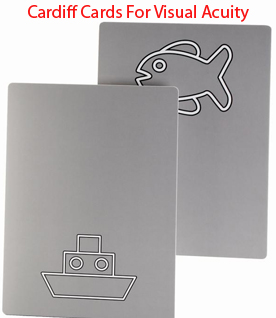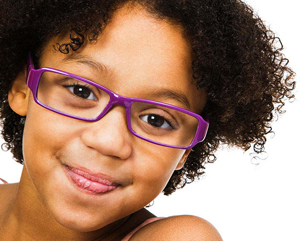We provide child friendly, quality, comprehensive, international standards of eye care for children.
 Vision Assessment
Vision Assessment
Vision can be assessed from the time a child is born. Specialized techniques and tests are used for children who cannot read. We use scientifically tested picture charts. Babies are born with very poor vision. The vision develops until the child is 8 years old. It is important that any eye disease is detected before the age of 8 years. If you wait to test your child’s eyes when they are able to read letters or numbers, this may be too late. Your child can develop a lazy eye (amblyopia) which may not be reversible after the age of 8 years.
Eye Turn/Squint (strabismus)
 This occurs when one/both eyes turn in or out. The danger of this is that one eye can become lazy (amblyopic). It is important to rule out any eye disease or spectacle prescription. Vision has to be assessed carefully. The lazy eye must be corrected as early as possible, before the age of 8 years. This is usually done through patching of the stronger eye.
This occurs when one/both eyes turn in or out. The danger of this is that one eye can become lazy (amblyopic). It is important to rule out any eye disease or spectacle prescription. Vision has to be assessed carefully. The lazy eye must be corrected as early as possible, before the age of 8 years. This is usually done through patching of the stronger eye.
Special Needs
Children with Down Syndrome and Cerebral Palsy are more likely to require ‘reading/near’ spectacles. This is because their eye muscles are weak and find it difficult to change focus as well as maintain focus at near (accommodation). This ability is measured in pre-verbal children/adults using a specialized technique called dynamic retinoscopy.
We use picture tests for those who are not able to communicate verbally.
We can prescribe colored overlays for children with reading difficulties.
Contact lenses
Some children who have the following conditions may require contact lenses:
- Aphakia – when an artificial lens is not implanted in the eye following cataract surgery
- Keratoconus – This is when the cornea is conical shaped rather than spherical shaped
- High myopia/ hyperopia- short-sighted/ long-sighted
- Anisometropia – when there is a large difference in spectacle prescription between the two eyes
Extended wear contact lenses, which children can sleep with are fitted. We also teach the parents how to insert and remove contact lenses.
Color Vision
Ideally, all boys should be checked for color vision defects by the age of 3 years.  Kindergarten teaching utilizes a lot of colors. If a child is not able to distinguish colors, this can affect his/her learning. Boys are more likely to be color blind than girls. We can assess color vision from 2 years onwards. We use a specialized color vision test designed at Cardiff University, UK.
Kindergarten teaching utilizes a lot of colors. If a child is not able to distinguish colors, this can affect his/her learning. Boys are more likely to be color blind than girls. We can assess color vision from 2 years onwards. We use a specialized color vision test designed at Cardiff University, UK.
Color vision is also important for career advice, especially for careers in the armed forces, aviation industry and the police force. It is recommended that all babies have their eyes checked at the age of one and every two years after that. Babies under the age of one year, who were born premature, have an eye turn/squint, not following objects, tearing, sensitive to light should have an eye exam before their first birthday.
If you see a white appearance in the centre of the eye you should have your child examined by a pediatric Ophthalmologist immediately.
Spectacle Prescription (Refractive Errors)
 Children are born long-sighted, which decreases by the time they are 7 years old. It is important to detect a moderate to severe
Children are born long-sighted, which decreases by the time they are 7 years old. It is important to detect a moderate to severe spectacle prescription before the age of 7 years. If not corrected, this could lead to lazy eyes (amblyopia) and if not corrected by the age of 7 can be irreversible.
spectacle prescription before the age of 7 years. If not corrected, this could lead to lazy eyes (amblyopia) and if not corrected by the age of 7 can be irreversible.
Children have plenty of focusing ability (accommodation). This is why computerized eye testing does not give accurate results in children. Specialized retinoscopy techniques are used to assess the spectacle prescription in children. Occasionally we have to put eye drops in children’s eyes to knock out the strong focusing ability of a child’s eye to measure the full prescription.
Prescribing spectacles in children is not as easy as in adults. One has to measure accommodation in children before deciding on how much of the spectacle prescription to correct. This is done using a highly specialized technique called dynamic retinoscopy.
Before prescribing spectacles in children, one must consider the following;
- Bincocular function – are the two eyes working together?
- Vision in each eye
- Age – is the child going to school?
- Accommodation – how much focusing ability does the eye have


Who is testing your eyes?
There is no board for Optometrists in Kenya. Anyone can open up an ‘Optical Shop’ and test your eyes. Please do not be afraid to ask your Optician/Optometrist for their qualifications.
